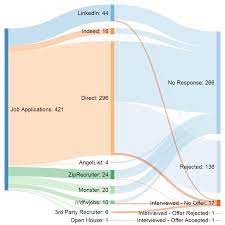A full stack engineer is a highly sought-after professional, who is responsible for the development, maintenance, and deployment of applications. They have expertise in both the front-end and back-end of web development.
Full stack engineers are proficient in a variety of programming languages and technologies, including HTML, CSS, JavaScript, PHP, Node.js, Ruby on Rails and more. They must be able to develop user interfaces with HTML and CSS; create dynamic webpages with JavaScript; build data models with databases such as MySQL; design server-side logic with server-side scripting languages such as PHP; construct REST APIs with Node.js; create web applications with Ruby on Rails; and deploy applications on cloud platforms like Amazon Web Services or Heroku.
In addition to coding skills, full stack engineers must have a strong understanding of software design principles, including object-oriented programming (OOP) and Model View Controller (MVC) architecture. They should also be familiar with version control systems such as Git or Subversion in order to track changes made to the codebase over time.
Full stack engineers must be able to think critically and solve complex problems quickly. They should have excellent communication skills in order to collaborate effectively with other developers in the team. Furthermore, they should have an eye for detail and be able to troubleshoot issues that arise during development or deployment processes.
In summary, full stack engineers are highly sought after professionals who possess a wide range of technical skills in both front-end and back-end development. Their ability to solve complex problems quickly makes them invaluable members of any development team.
9 Tips for Working with Full Stack Engineers
- Familiarize yourself with all aspects of web development, including front-end and back-end technologies.
- Learn how to use databases, such as MySQL, MongoDB or PostgreSQL.
- Become proficient in HTML, CSS and JavaScript programming languages.
- Develop an understanding of server-side scripting languages like PHP and Ruby on Rails.
- Understand the basics of web architecture, such as HTTP request/response cycles and MVC frameworks (Model View Controller).
- Get familiar with version control systems like Git or SVN for managing code repositories and tracking changes over time
- Be able to debug applications quickly and efficiently
- Acquire knowledge about cloud platforms like AWS or Azure for hosting applications in the cloud 9 . Stay up to date with new trends in web development technologies
Familiarize yourself with all aspects of web development, including front-end and back-end technologies.
Full stack engineers are the key to a successful web development project. They are responsible for the entire development process, from concept to completion. To become a full stack engineer, it is important to familiarize yourself with all aspects of web development, including front-end and back-end technologies.
Front-end development involves the design and implementation of user interfaces, such as websites and mobile applications. This includes HTML, CSS, JavaScript, and other related technologies. Back-end development involves the server-side components of web applications such as databases and APIs. This requires knowledge of programming languages such as PHP, Python, Java, and Ruby on Rails.
Full stack engineers must have an understanding of both front-end and back-end technologies in order to build a successful product. They need to be able to work with both teams in order to ensure that the product meets all requirements and is built on time. Additionally, they need to be able to troubleshoot any issues that may arise during the development process.
By familiarizing yourself with all aspects of web development, you can become a full stack engineer who can handle any project from concept to completion. It is important to stay up-to-date on new technologies so that you can remain competitive in this rapidly changing field.
Learn how to use databases, such as MySQL, MongoDB or PostgreSQL.
Full stack engineers are essential for building and maintaining modern software applications. As such, it is important for full stack engineers to have a strong understanding of the technologies used in software development, including databases.
Databases are an integral part of any software application as they store and manage data. MySQL, MongoDB, and PostgreSQL are some of the most popular databases used in software development today. Knowing how to use these databases is an important skill for any full stack engineer.
MySQL is an open source relational database management system (RDBMS) that can be used to store data in tables with rows and columns. It is highly scalable and supports a variety of programming languages such as PHP, Python, Java, and JavaScript. MongoDB is a non-relational database that stores data in documents instead of tables. It is also highly scalable and provides support for many programming languages. PostgreSQL is an object-relational database management system (ORDBMS) that combines the features of both relational and non-relational databases. It provides support for a wide range of programming languages and has powerful features such as stored procedures, triggers, views, etc.
Learning how to use these databases is essential for any full stack engineer looking to stay up-to-date on modern software development technologies. With a strong understanding of these databases, full stack engineers can create more efficient applications that can handle large amounts of data with ease.
Become proficient in HTML, CSS and JavaScript programming languages.
Full stack engineers are the backbone of the tech industry. They are responsible for building and maintaining software applications from the ground up. To be successful in this role, it is important for full stack engineers to be proficient in HTML, CSS and JavaScript programming languages.
HTML (Hypertext Markup Language) is a markup language used to create web pages. It provides structure and content to web pages, allowing developers to add text, images, videos and other content. CSS (Cascading Style Sheets) is a language used to style web pages. It allows developers to control the look and feel of a website by adding colors, fonts, layout and more. Lastly, JavaScript is a programming language used to create interactive elements on websites such as animations, drop-down menus and forms.
In order to become a successful full stack engineer, it is essential that you have strong knowledge in all three of these languages. You should be comfortable writing code from scratch as well as troubleshooting existing code. Additionally, you should have an understanding of how these languages interact with each other in order to build a complete application or website.
By becoming proficient in HTML, CSS and JavaScript programming languages, full stack engineers can ensure they are equipped with the necessary skills needed for success in their role.
Develop an understanding of server-side scripting languages like PHP and Ruby on Rails.
Full stack engineers are in high demand, as they have the skills to develop and maintain websites and applications from start to finish. One important skill for full stack engineers is an understanding of server-side scripting languages like PHP and Ruby on Rails.
PHP is a scripting language used to create dynamic web pages. It can be used to access databases, create user interfaces, and more. Ruby on Rails is another popular server-side scripting language that is used for web application development. It provides a framework for quickly building powerful web applications.
Having an understanding of these server-side scripting languages is key for full stack engineers, as it allows them to create and manage dynamic websites and applications. With an understanding of PHP and Ruby on Rails, full stack engineers can build powerful websites that are secure, reliable, and user friendly.
Full stack engineers who understand server-side scripting languages like PHP and Ruby on Rails are in high demand in the industry today. By learning these languages, full stack engineers can become even more valuable in the job market.
Understand the basics of web architecture, such as HTTP request/response cycles and MVC frameworks (Model View Controller).
As the demand for full stack engineers continues to grow, it is essential to understand the basics of web architecture. This includes understanding the HTTP request/response cycle and MVC frameworks, such as Model View Controller (MVC).
The HTTP request/response cycle is the process by which a web browser sends a request to a server and then receives a response from the server. This is how websites are able to display dynamic content. A full stack engineer should have a good understanding of how this process works in order to be able to create efficient and effective web applications.
MVC frameworks are used to separate an application’s data model, user interface, and control logic into three distinct components. This makes it easier for developers to maintain their code and ensure that changes do not affect other parts of the application. A full stack engineer should be familiar with MVC frameworks in order to create well-structured web applications.
Overall, understanding the basics of web architecture is essential for any full stack engineer. By having a good understanding of HTTP request/response cycles and MVC frameworks, they will be able to create efficient and well-structured web applications that meet their client’s needs.
Get familiar with version control systems like Git or SVN for managing code repositories and tracking changes over time
Full stack engineers are responsible for the development and maintenance of both the front-end and back-end of web applications. As such, they need to be familiar with a wide range of technologies, tools and processes. One of these processes is version control, which is essential for managing code repositories and tracking changes over time.
Version control systems such as Git or SVN allow developers to keep track of changes made to their codebase over time. They also enable them to collaborate with other developers on the same project by allowing them to submit and review changes before they are applied to the codebase. This helps ensure that any errors or inconsistencies are caught early on before they become a major issue.
By using version control systems like Git or SVN, full stack engineers can ensure that their codebase is always up-to-date, secure and consistent across all platforms. This makes it easier for them to identify bugs or errors quickly, as well as make sure that their codebase is always in sync with any changes made by other developers on the project.
In short, full stack engineers should make sure they get familiar with version control systems like Git or SVN in order to ensure that their codebase is secure, consistent and up-to-date at all times.
Be able to debug applications quickly and efficiently
As businesses become increasingly digital, having a full stack engineer on your team is essential. Full stack engineers are responsible for developing and maintaining the entire technology stack of an application, from the front-end user interface to the back-end database. One of their most important tasks is to be able to debug applications quickly and efficiently.
Debugging is the process of finding and fixing errors in a program or application. It requires technical skill, problem solving ability, and a deep understanding of how applications work. A full stack engineer should be able to quickly identify problems in an application and develop solutions that will fix them. This could include making changes to code, testing different configurations, or using debugging tools like breakpoints and logging statements.
Debugging can be a complex process, especially when dealing with large applications with many layers of complexity. A full stack engineer should have experience in debugging various types of applications and be able to troubleshoot problems in an efficient manner. They should also have an understanding of how different parts of an application interact with each other so they can identify potential issues before they become major issues.
In conclusion, debugging applications quickly and efficiently is a critical skill for any full stack engineer. With the right skillset and experience, they can help ensure that applications run smoothly and provide users with the best experience possible.
Acquire knowledge about cloud platforms like AWS or Azure for hosting applications in the cloud 9 . Stay up to date with new trends in web development technologies
As the demand for full stack engineers continues to grow, it is important to stay up to date with the latest technologies and trends in web development. One of the key skills that full stack engineers should have is knowledge of cloud platforms such as AWS or Azure for hosting applications in the cloud.
Cloud computing offers a range of benefits, including scalability, cost savings, and increased flexibility. By understanding how to use cloud platforms, full stack engineers can ensure that applications are deployed quickly and securely. They can also take advantage of features such as automated backups, load balancing and disaster recovery.
Full stack engineers should also be aware of new trends in web development technologies. This includes new frameworks such as React and Angular, as well as emerging technologies such as serverless computing and containerization. By staying up to date with these trends, full stack engineers can ensure that their applications are built using the most efficient and secure practices possible.
In conclusion, knowledge of cloud platforms like AWS or Azure is an essential skill for any full stack engineer. Additionally, it is important to stay up to date with new trends in web development technologies in order to ensure that applications are built using best practices.




